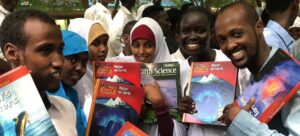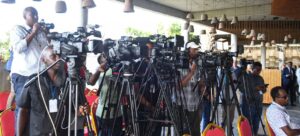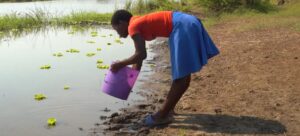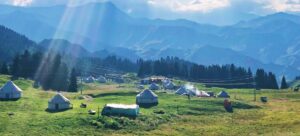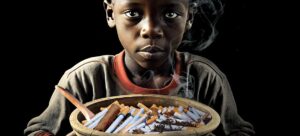Maria José Torres Macho travelled to Antarctica with the UN chief, António Guterres, ahead of the global climate conference, COP28, which is getting underway in Dubai in the United Arab Emirates:
“The sleeping continent hides under its beauty, its undeniable role as a key climate regulator for the planet. While we enjoyed the majestic and infinite white landscape of islands, glaciers and icebergs spotted with penguins, sea lions, whales and a distinct biodiversity underwater, we confronted the reality that scientific evidence is putting in front of decision makers at this year’s UN Climate Conference -COP 28: the planet needs the Antarctic to remain as it is.

Safeguarding Antarctica is essential to halt the acceleration of climate change and keep to the 1.5°C warming limit.
- The melting of ice is happening at triple speed than in previous decades (more than 1.5 million square km have been lost in 2023 alone) causing rising sea levels that would be catastrophic to the survival of coastal communities
- The impact of the increasing temperatures in the Antarctic is affecting the jet streams
‘Antarctica is geographically remote for most of us, but its future is closely linked to that of future generations,’ said the Secretary-General during his stay, referring to up how the consequences of what happens there will catastrophically affect the rest of the world.
‘What happens in Antarctica doesn’t stay in Antarctica,’ he added.
A view from Chile
Thousands of miles north in Chile, where I serve as the UN Resident Coordinator, the effects of Antarctica’s melting ice and rising sea levels cannot be ignored.
From cycles of drought, desertification and wildfires to deadly heatwaves, coastal erosion and other extreme weather events, I’ve seen first-hand how climate change is ravaging communities and upending livelihoods across the country.

The impact of Chile’s water crisis is particularly severe, with rural populations facing the heaviest burden.
As these threats loom larger, our UN team in Chile is working closely with the national authorities to scale up urgent action to combat the triple planetary crisis of climate change, pollution and biodiversity loss.
Together we are supporting the Government to realize its ambitious national agenda to protect Chile’s biodiversity, reduce emissions through the expansion of carbon markets and steer social, economic and environmental transitions that support renewable energy. But, Chile’s role in combatting climate change goes beyond its own borders.
Leading from the South
Known as ‘the door to the Antarctic’, Chile is a logistic enabler for many countries that have scientific bases in the territory and benefit from the vital work of the Chilean Armed Forces.
During my visit to the continent, I listened to many stories from scientists and officers who spoke about the special mystique and beauty of the Antarctic. I was particularly struck by their sense of sacrifice and their willingness to spend an entire year away from their families in order to protect this endangered territory.

At the national level, I was also impressed by the strong leadership of the President of Chile and his team for organizing this visit and helping to amplify the conversation on climate action and the unique role of the Antarctic ahead of COP28.
Towards COP28
The need for strong regional leadership and renewed commitments towards climate action could not be timelier.
Just days before we travelled to Antarctica, the world reached a grim new milestone. For the first time in modern recorded history, the planet is on average two degrees Celsius warmer than pre-industrial levels, falling short of the commitments made in the Paris climate agreement.
In Antarctica, I saw the impact of these failed promises, but also witnessed the determination of the Secretary-General to convey a strong message from the South: to end the world’s addiction to fossil fuels, COP 28 must be a call to action, not just words. The commitment and cooperation I saw on my visit to Antarctica shows that this is possible.
As the Secretary-General put it: ‘People in Antarctica are guided by cooperation, not competition; this is the spirit we need at COP28.'”
UN Resident Coordinator:
- The UN Resident Coordinator, sometimes called the RC, is the highest-ranking representative of the UN development system at the country level.
- In this occasional series, UN News is inviting RCs to blog on issues important to the UN and the country where they serve.
- Learn more about the UN’s work in Chile here.
- Find out more about the UN Development Coordination Office here.

